Throughout history, individuals, nations and political factions have used the conflict to gain control of territories. Human history has been shaped by struggles in more ways than we can comprehend. War is responsible for catastrophic transformations, revolutions and even the internet we use today. Nothing exemplifies war better than the armies fighting it. Ancient warfare refers to conflicts between the beginning of written history and the end of the ancient period.
The technology used in ancient battles and armies
Prehistoric and ancient warfare stands out more in terms of organization than technology. The rise of city-states, followed by empires, allowed warfare to develop considerably. Early ancient armies continued to rely mostly on bows and spears, the same weapons that were made for hunting in prehistoric times. Soldiers were divided into range and shock infantry during this period, with shock infantry either set up to induce penetration of the opposite line or held out. These forces were ideally mixed, which put the opponent in a pinch if they were to gather the forces and expose them to attack from a distance or spread them out and expose them to shock. This equilibrium soon changed as technology-activated tanks, cavalry and artillery played an active role on the battlefield. Some other developments were hand-to-hand weapons such as swords, spears, clubs, maces, axes and knives. Even catapults, siege towers, and slingshots were used during sieges.
Great armies in ancient history
The New Assyrian Army
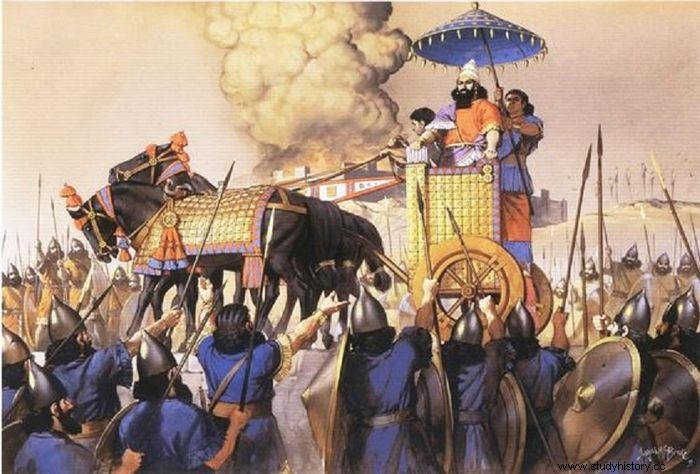
In the 10th century BCE, the New Assyrian Empire began, and during this time Ashurnasirpal II became famous for using solid tactics. For three centuries, the New Assyrians controlled Mesopotamia, forming the world's largest empire. Its rulers conquered vast tracts of land stretching from Egypt to the Persian Gulf. Its military prowess was helped in part by the reforms of the monarch Tiglath-Pileser III, who established Assyria's first standing army in the XNUMX century BC. He expanded the empire by absorbing thousands of immigrants from vassal kingdoms, but the empire's most fearsome troops were its horse-drawn carriage contingents. The New Assyrians were a force to be reckoned with, with their superior numbers, iron swords and thundering chariots. They established the world's first de-facto empire, including present-day Anatolia, the entire fertile crescent, the Judean coast, parts of western Iran known as Elam, and even Egypt.
The Achaemenid Empire Army
Popularly known as Cyrus the Great's Persian Empire is one of the few monarchs in history that deserved the mark "Great". He gathered an unorganized union of northern Iranian tribes to build one of the greatest empires of antiquity. He achieved this by establishing the first fully professional army in the history of mankind. An army consisted of men from Thrace in Eastern Europe to the Nabataeans in Arabia, from Scythian archers on the steppes to Indian elephant mahouts. The Achaemenid Empire was the world's largest and had the world's first army of half a million troops. Such an enormous army would not be seen in the Western world again until Napoleon's time, 2,300 years later. In addition, it consisted of elite, specialized warriors such as the immortals, a highly equipped infantry known today as one of history's most famous combat groups.
Army of the Roman Empire
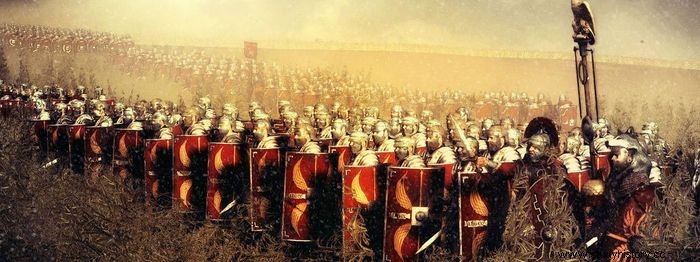
The lasting legacy of ancient Rome as one of the most powerful and successful civilizations globally is due to its military might. The Republic's exceptionally well-trained, disciplined, and well-equipped army conquered a large territory from England to Egypt, crushing many. It became even more formidable when the republic became an empire. During that time, it shifted from a system of short-term conscription to the development of a permanent standing army. The famous legionaries of Rome were among the most formidable troops in history due to their organization, training and better weapons. Its use of multi-line formations, among other things, allowed the Roman army to refresh frontline troops during battle when new Roman soldiers would stand up to weary opponents. In addition, mobility was used to gain offensive advantages by the Roman army, often led by excellent generals.
Han Dynasty Army
From 202 BC. to 220 AD was the military apparatus of the China Han dynasty. The forces in ancient China were impressive, but the Han dynasty stood out. At the end of the third century BC. threw the collapse of the Qin Dynasty China into disarray until rebel leader Liu Bang from Han reunited the country. Nomadic confederations such as Xiongnu in the north posed early dangers to the Han Empire. Male conscripts were forced into two years of military service under the Han regime, expanding the military ranks, while a professional standing army was used to secure the fragile northern border. Popular weapons were the crossbow and jian, a straight, double-edged blade. With these factors, the Han dynasty expanded its borders and survived for four centuries until they fell victim to warfare and internal corruption.
The Moorish Army
Chandragupta Maurya, who defeated the Greek army of Seleucus Nicator, to Ashoka the Great, the physical continent of India; The Mauryas were India's first great empire. They built their empire at the back of the most magnificent army seen on the subcontinent up to that point. According to Megasthenes, a Seleucid Empire envoy, Chandragupta Maurya raised an army of 30,000 9,000 cavalry, 600,000 XNUMX war elephants and XNUMX XNUMX infantrymen. Chandrguta conquered large parts of the Indian subcontinent. He established an empire stretching from the Arabian Sea to the Bay of Bengal.
The Spartan Army
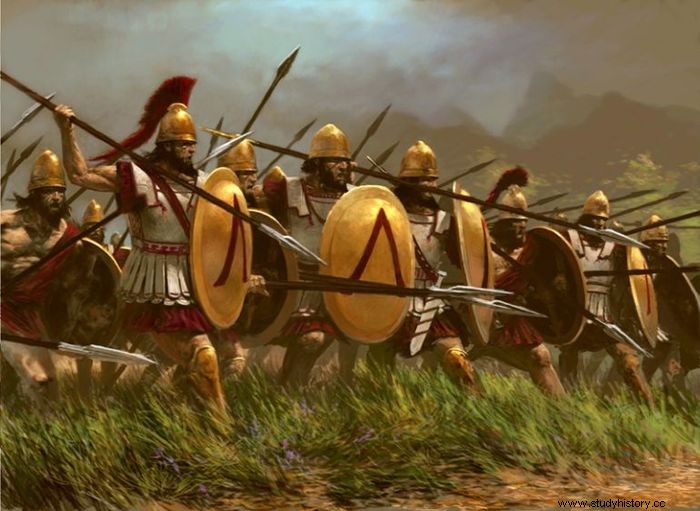
Located in southern Greece, Sparta was the perfect military state. The Spartans, an ancient warrior society, fought their style with strict military institutions. In fact, the Spartans had the only full-time army in all of ancient Greece. Even their social systems produce tough warriors from ordinary citizens. Boys were torn from their mothers at a young age and immersed in the flames of endless training, harsh punishment and persistent campaigns for the dead. Because their lives were so difficult, any Spartan who lived to old age was highly regarded for his ability as a warrior. In addition, the army followed a strong code of honor, brotherhood and frugality. During the Persian invasions, the Spartans' war machine not only helped them survive the world's largest army. After defeating the Athenians in a long war for hegemony, they eventually came to dominate all of Greece.
The Egyptian Army
Ancient Egypt could not have survived for three thousand years without creating an extremely strong military. It was one of the earliest great civilizations in history, united around 3100 BC, and had to defend its enormous borders against several foreign forces. The first Egyptian troops had a spear with a copper tip and a large wooden shield consisting of leather. A stone mace was also carried throughout the archaic era and was eventually replaced by the bronze battle ax. In addition, Egypt inherited the compound bow and horse-drawn carriage from the Hyksos invaders. The Hyksos invaders gained control between the Central and New Empires and gave the Egyptians the cruel, sickle-shaped khopesh. Together with the establishment of a professional, standing army, these innovations helped the Egyptians revolutionize their military and defeat many of their ancient adversaries.
The Mongol Army
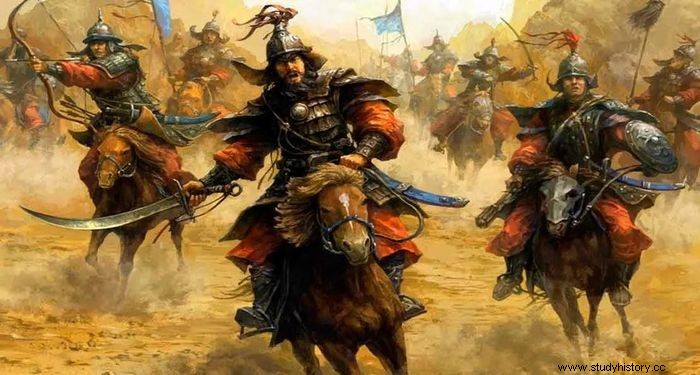
The Mongols, led by Temujin, later known and feared as Chengiz Khan, brought them together at his will. This Mongolian confederation cut through Eurasia like a hot knife through butter. Instead of their fighting skills, their strategy and mobility won the day. Their secular attitude and readiness to absorb sides of enemy troops separated them at that time. They learned siege from the Chinese and used it in the Persian Khwarizmi Empire. They used the well-known technique of pretending to retreat to pull the enemy into a seaweed trap and then defeat them. Chengiz's rule stretches from Korea in the east to Hungary in the west, from Russia and Siberia in the north to the gates of India in the south when he died. An astonishing feat for a nomadic army of goat herders in the time of the knights and match bells.
Army of the Babylonian Dynasty
This small city-state became an empire that conquered virtually all of Mesopotamia under Hammurabi, the sixth monarch of the first Babylonian dynasty. The monarch is best known for the famous "Code of Hammurabi", which established the rules of the kingdom and was registered on a stone stele. But he was also a conqueror, commanding a well-trained army that led many of the nearby city-states before advancing towards other important powers in the region, especially the ancient Assyrian empire. One of his favorite strategies was to poison local water sources, which caused his opponents to surrender.
Army of the Carthaginian Empire

While the Huns later became Rome's sworn rivals, Carthage held the position first, fighting them in the Punic Wars. Hannibal was the great and powerful leader of the Carthaginian Empire. His clever and influential military tactics are studied today almost two thousand years later. His use of the seaweed movement to encircle and destroy a far greater Roman force at the Battle of Cannae is one of the greatest military maneuvers in history. But leading his army, war elephants and all, down the Alps and into Italy may have been Hannibal's finest triumph.
Huns Army
These barbarians from the Eurasian steppes swept past troops in Central Asia and Western Europe, fighting and plundering far into the Western Roman Empire under the command of the famous Attila. Sneaky tacticians and experienced riders fought from horseback with bows, long swords and spears, and overpowered opponents with fast charges while holding soldiers in reserve for reinforcements. When they swept into Europe, they seemed invincible, and it was not until Attila's death, crippled by internal strife, that the struggle began to turn against them.
The Macedonian Army
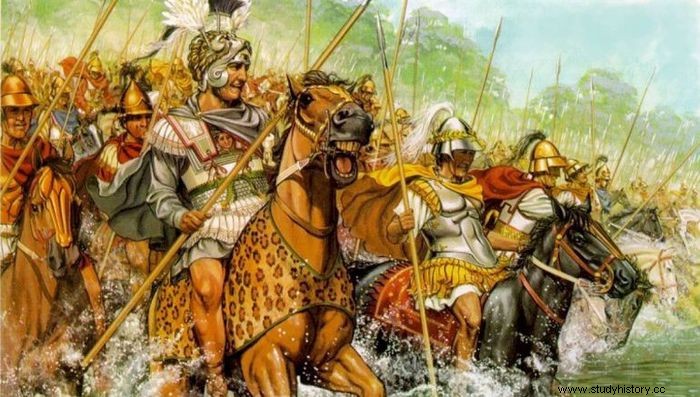
The military of the Kingdom of Macedonia was one of the most powerful in the ancient world. King Philip II of Macedon designed and fortified it. The new Macedonian army was a mixture of many formations. Phillip used Macedonians and other Greeks, especially Thessalian cavalry, and mercenaries from across the Aegean and the Balkans. By 338 BC, more than half of his army for his planned invasion of the Achaemenid Empire in Persia had come from outside Macedon's borders - throughout the Greek world and nearby barbarian tribes. After Philip's death, his son, Alexander the Great, led the army to do the unthinkable:to destroy Persia, Asia Minor, and Egypt without losing a single war.
Great battles in ancient history
Battle of Kadesh in 1274 BCE

This battle between the new kingdom of Egypt under Ramses II and the Hittite kingdom arose on the banks of the Orontes River, near the modern borders of Syria and Lebanon. It is the oldest battle in history with details of army formations or military tactics registration carried out. This battle is the largest tank battle in recorded history, and involves over 5,000 tanks, where more than 2,000 were destroyed. It also resulted in the earliest surviving peace treaty, the Eternal Treaty or the Silver Treaty.
Battle of Muye in 1046 BCE
The Zhou Dynasty ruled for 790 years, making it the longest reigning dynasty in Chinese history. But all dynasties, even the most powerful, must begin somewhere. That beginning came for the Zhou Dynasty at the Battle of Muye when an army of only about 50,000 500,000 Zhou soldiers defeated over 170,000 XNUMX enemy soldiers and XNUMX XNUMX armed slaves to bring the Shang Dynasty to an end. When the slave-bound people received weapons to protect Yin, many of them deserted to the Zhou side. Others held the spears upside down, indicating that they did not want to meet the better trained Zhou.
Battle of Plataea &Thermopylae in 479 BCE
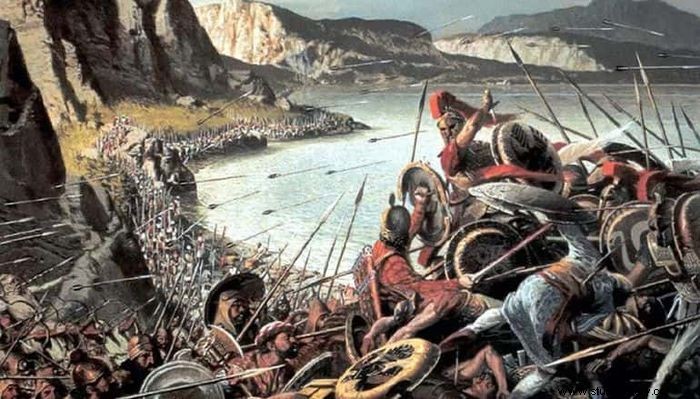
A massive Persian force led by King Xerxes attacked Greece in the summer of 479 BC. The Greeks tried to resist the Persian force in a small pass with 300 Spartans and 7,000 hoplites led by King Leonidas. Despite the brave attempts of the Spartans, Persia seized Thermopylae and won triumphs in Artemisium, Thessaly, Boeotia, Euboea and Attica. First, however, King Xerxes was defeated at the Battle of Salamis. Then, with half his army, Xerxes escaped and returned to Asia. Under the leadership of Spartan king Pausanius, 60,000 XNUMX hoplites marched into Boeotia to confront the Persians. The historic battle took place in Boeotia, near Plataea.
Battle of Gaugamela in 331 BCE
On October 1, 331 BCE, Alexander the Great fought the decisive battle against the Persian Achaemenid Empire. Alexander's strategies were effective despite having a more limited military force than the Achaemenid Empire. The two huge armies came together near Gaugamela. Alexander's clever tactics were so effective that the war resulted in the downfall of the Achaemenid Empire.
Battle of Hydaspes in 326 BCE
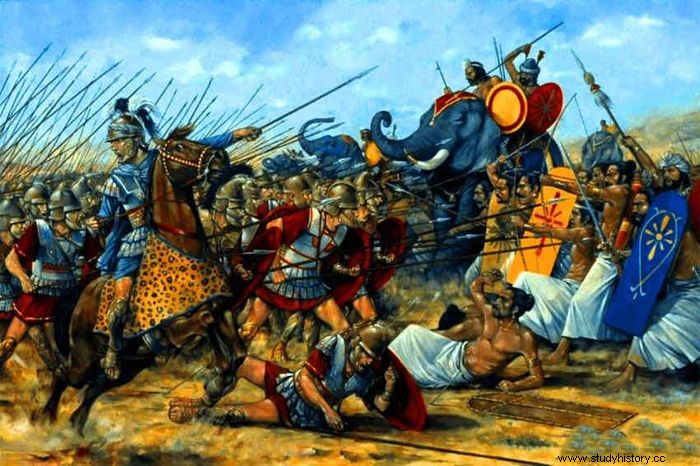
The battle of the Hydaspes River was fought in 326 BC. between King Porus of the Hindu Paurava Empire and Alexander the Great. It was one of Alexander the Great's most costly wars. Alexander tried to cross the river during a downpour during this meeting, although a large Indian force was waiting for him on the other side. The battle took place due to Alexander's mission to expand his dominion to India. The conflict paved the way for the development of Greek and Indian cultures that lasted for millennia.
The Kalinga War of 261 BCE
No conflict in Indian history is as meaningful, either in terms of intensity or outcome, as Ashoka's Kalinga war. No battle in the history of mankind has turned the victor's attitude from ruthless brutality to exemplary piety like this. The Kalinga War, a brutal battle between the Maurya Empire, which stretched across large parts of the Indian subcontinent south of the Himalayas, and the coastal state of Kalinga, could have cost up to 300,000 XNUMX deaths. Witnessing the slaughter of the conflict prompted Mauryan king Ashoka to turn to Buddhism, swearing off further conquering battles.
Battle of Changping from 262 BCE to 260 BCE
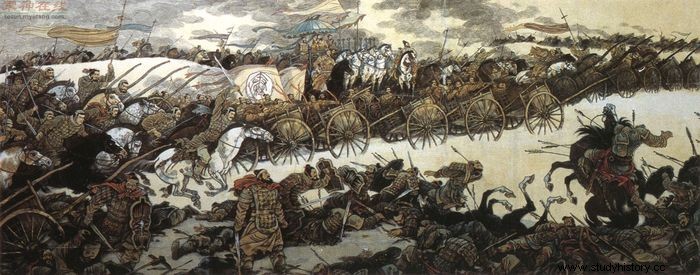
The Battle of Changping took place in China during the war between the states of Qin and Zhao. In 262 BC. Qin tried to conquer Zhao. Zhao invaded the Qin camp with a force of 400,000 46 men. However, Qin's army attacked the Zhao force in the mountains before reaching the camp. After XNUMX days without supplies, Zhao surrendered, and Qin achieved a resounding victory.
The siege of Syracuse from 214 BCE to 212 BCE
The sovereign kingdom of Syracuse was a close ally of the Roman Republic, and ruled the island of Sicily, which Carthage had conquered during the First Punic War. As the Second Punic War dragged on, pro-Carthage groups in Syracuse made the city feel the pain of the Roman siege again. This time, however, the city was home to the renowned polymath Archimedes, who developed inventive methods to help repel Roman forces and extend the siege for several months. The city did not fall until a Roman soldier murdered Archimedes in his home, against instructions from the Roman commander to spare the inventor's life.
Battle of Metaurus in 207 BCE
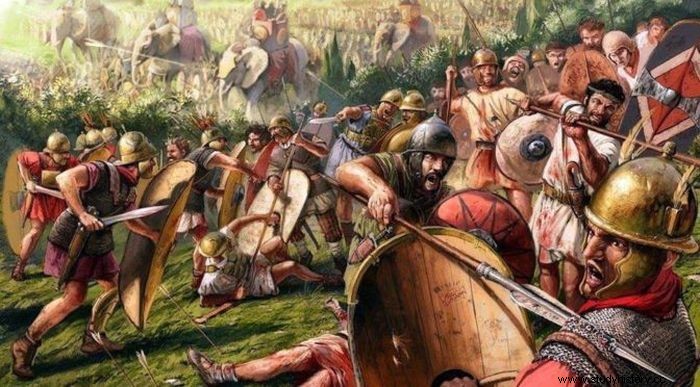
The War of Metaurus was a key battle during the Second Punic War. Hannibal took equipment from his brother Hasdrubal while waiting for reinforcements. The reinforcements and equipment were crucial to winning the campaign against Rome. Marcus Livius Salinator and Caius Claudius Nero led the Roman army. Claudius arrived in Metaurus to follow Marcus Livius. Marcus Livius, however, fought against Hannibal in the Grumentum, 100 kilometers south of the Metaurus River, at that time. Hasdrubal was imprisoned in Metaurus by cruel and unsuspecting troops. Instead of the promised military reinforcements, Hannibal received Hasdrubal's head, which the Romans threw into his camp.
Battle of Gaixia in 202 BCE

The Chinese Han dynasty began with Liu Bang's victory at the Battle of Gaixia in present - day Suzhou in 202 BCE The Han armies had previously achieved several strategic successes, but they controlled only a small area of China. Nevertheless, Han troops eventually defeated their Chu opponents in a battle full of double crosses, catches and possible saves. This defeat culminated in the suicide of Chu leader Xiang Yu and paved the way for Liu Bang to declare himself emperor of China, ushering in the Han dynasty.
The Third Servile War from 73 BCE to 71 BCE
The third servile war was the last in a series of slave revolts against the Roman Republic, led by the rebellious Roman slave Spartacus. The 78 slave-bound and fleeing gladiators expanded into a vast army of 120,000 71 men, women, and children. With the prospect of increasing slave revolts, the Romans assembled an army of eight legions led by Marcus Licinius Crassus. The conflict ended with a resounding Roman victory in XNUMX BCE. Six thousand battle survivors were crucified along the Appian Way to set an example and discourage future revolts.
Battle of Carrhae in 53 BCE
Crassus, one of Rome's richest men, gathered his armies and chose to attack Parthia. He did this without the approval of the Roman Senate. Crassus marched into Parthia across the Mesopotamian desert, refusing King Artavasdes II of Armenia's proposal to take an Armenian route for the invasion. The conflict between the two empires took place at Carrhae. Surena, the Parthian leader, won the battle decisively, killing and capturing the majority of the Roman soldiers and killing Crassus. This led to the fall of the Roman Republic and the establishment of the Roman Empire.
Battle of Red Rocks in 208 AD

Near the end of China's Han dynasty, two southern warlords faced a numerically stronger opponent from the north. This battle is listed as the largest naval battle in history. The northern warlord Cao Cao claimed to have sent 800,000 50,000 warriors to conquer regions south of the Yangtze River. However, they were only confrontations of a considerably smaller army of about 800,000 XNUMX soldiers. Southern warlords Sun Quan and Liu Bei led this army at the Battle of Red Cliffs. Cao Cao's commander questioned whether his reinforcements were XNUMX XNUMX. In any case, the southern warlords were significantly outnumbered, yet they kept their northern rival in check due to better maritime expertise. This confrontation helped form two southern dynasties, and ushered in the period of three kingdoms in Chinese history.
The Battle of the Catalan Fields in 451 AD
This battle between Rome and its treaty-bound Germanic allies and tens of thousands of Huns under the command of the infamous Attila may not have been decisive. Nevertheless, it helped to change the history of the area and the world. Although Attila's march into Roman-controlled Gaul was halted, the Romans and their allied military capabilities were severely limited. Had it not been for Attila's death two years later and the subsequent fall of his kingdom, a subsequent battle could have been very different for the fate of the Roman Empire.
The conclusion
Throughout history, there were many armies that fought wars for various reasons. In every battle, blood is spilled, kingdoms are destroyed and people are killed. Some conflicts left an indelible mark on history. While others created stories that have gone through the centuries. Most notably, some of the effective military techniques developed on ancient battlefields are still useful today.
